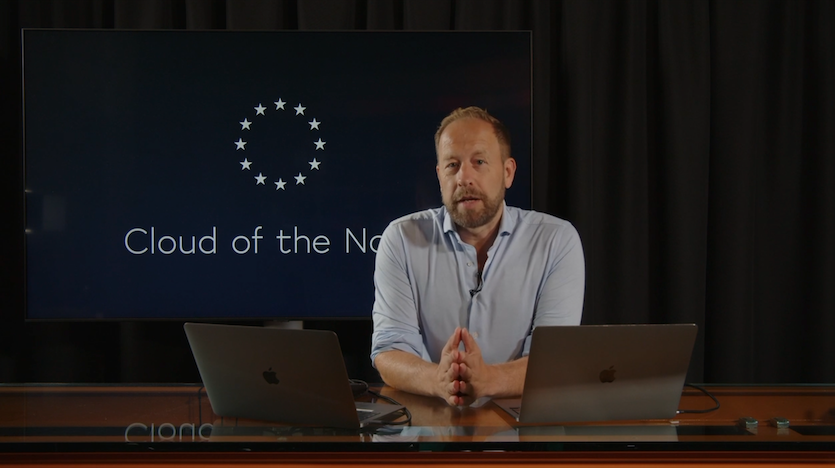The State of the Streaming Industry
Last updated: 29 March 2023

Streaming is revolutionizing the way we consume media and entertainment, and the possibilities are endless. From music and movies to live events and gaming, streaming is providing a seamless and convenient way for people to access their favourite content anytime, anywhere. As the industry continues to grow and evolve, we’re proud to be at the forefront of this exciting new era of entertainment.
A 29-year-old industry
Once started as a niche, online audio, video and livestreams are now an integral part of our lives. We started streaming in 1994. As a pioneer, Jet-Stream has seen many techniques, services, models and companies come and go. And sometimes reinvented.
Global scale
Secretly, it’s still a miracle that someone in Australia can instantly watch high-quality live video from the Netherlands, right? The scale, quality and performance of video are getting better and better. CDNs distribute streams to many millions of people, worldwide.
Beyond television
We once started with postage stamp format, at 1 frame per second. The quality of digital TV has been far surpassed, with 4K, HDR, and Dolby Atmos. Streaming democratizes and liberalizes: without interference from governments or walled gardens, anyone can broadcast and watch, anyone can share knowledge, gain inspiration, and trade. The fun and creativity are infinite.
Green streaming
Fortunately, there is increasing attention to the energy footprint: converting and storing many millions of videos, and the billions of viewing minutes consume a lot of power. The industry is making good strides in making video more efficient, with more efficient codecs, dynamic resource scaling, and renewable energy sources. We are far from there yet, and there is the risk of greenwashing, but the glass is half full: it’s on everyone’s agenda.
Streaming is strategic
Streaming is no longer just putting a nice video on your site. Online video is a strategic core asset for more and more organizations. It is crucial for internal processes, for your communication, and for your marketing. Increasingly, video is the core service itself. But if streaming is strategic, why is it still so easily outsourced to the first best vendor?
Streaming vendors
Streaming is not an easy technology. And it has only gotten more complex over the years, also because there are now many more use cases. Think of low latency, interactive personalized video, compression, multi-CDN, logs, stats, security, apps, monetisation, ads, the list is almost endless. It is impractical for most organizations to get all these specialities in-house. So you need a strategic partner.
Video platforms
On the one hand, you have video platforms that make creating a streaming workflow easier. You don’t need expensive experts. However, you may end up in a straitjacket, with limited control over features, quality, performance and cost.
Cloud Media Services
On the other hand, you have cloud media services, which provide you with a toolbox of features. You must have the expertise, budget and time to build a workflow. It will fit your needs. But the costs are high, the risks are great, and how future-proof are you really?
Streaming workflow orchestration
Both video platforms and cloud media services have their advantages, but also their disadvantages. For that reason, streaming workflow orchestration has recently received more attention. We would like to tell you more about how we pioneered this, share our experiences, what we ran into and how we solved this with a more open architecture in which you choose which services you use, how you set them up, and which of your own (or third party) services you integrate.
Full control
Streaming workflow orchestration gives you more control over your quality, performance, features and your costs. You have the advantages but not the disadvantages of video platforms and cloud media services. TCO is not only about control over external costs such as storage and data traffic but also your own internal operational costs, these are often underestimated.
Streaming costs money
Streaming does cost money. Fortunately, streaming also delivers a lot. Video conferencing saves millions of hours of travel and many tons of emissions. Online media provides enormous entertainment and unprecedented sharing of knowledge and creativity.
Free?
Some platforms offer a video for free or are dirt cheap. The legitimate question then becomes: who pays, and with what? With your data? Do you still want that, after all the scandals? Sometimes cheap is also expensive: you are lured with a cheap service, and then you are forced to upgrade to an extremely expensive Enterprise account, or else they will delete all your precious content and stats.
Making money with streaming
Increasingly, there is also good money to be made from streaming. Video engages and converts, so its use is gaining in popularity with e-commerce and sports sponsoring, for branding, lead generation and sales in shops. Content producers can now monetize content via pay-per-view, subscription, and advertising models.
Telcos
Telecom operators and internet providers sell more expensive bundles because people like to consume high-quality videos. Telcos do face increased investment requirements in their networks since the video is by far the heaviest type of data on the web.
OTT streaming platforms
With media services, profitability is a different story: some providers are profitable. But many others have viewers of movies and series subsidized by their investors. There are always start-up years, but more and more markets are becoming saturated. How sustainable is their model?
Streaming tech loss leaders
Many streaming tech service providers are pumped full of funding, at a time when borrowing money was free. Despite burning millions, they are not meeting their growth targets. And now that money is no longer free, the focus shifts from growth to profitability. Unlimited growth regardless of cost is out of favour, and fortunately so. Because loss leaders accustomed to achieving only growth end up bringing no value to investors, and only temporary value to their customers. Until they fold. At Jet-Stream we’ve always had a ‘mild growth – profitability first’ approach, which helped us survive through peaks and dips in this industry for many years. We think that’s healthier and more long-term.
CDN wars
Loss leaders also break up the market a bit. Take, for example, the price war between CDNs. There is actually too much investment in too many parties. Low prices help with scaling, allowing the business case for streaming platforms to beat faster. But how sustainable is such an extremely low price, given increased energy costs and the need for greening?
Downward spiral
Recently, an old debate flared up again. Should CDNs and streaming platforms pay money to telecom operators to cover investments in networks? What happens to business cases when telecom operators start charging money to CDNs and streaming platforms? Data costs go up, CDNs get squeezed, and so do streaming platforms. To reduce costs, the picture quality will be reduced, and investment in content will be reduced too, so consumers are more likely to switch to pirated services and purchase lower-speed Internet connections. Then the whole industry enters a downward spiral.
Cooperation
Telcos, CDNs and OTT platforms do not have to be in opposition to each other. They can better cooperate on Cloud and CDN federation in their own interests. This is nothing new. In 2000, we worked on a cool project. It was a federated CDN, where major telecom operators and streaming platforms worked together. No difficult standardization boards, we just put down edge streaming servers in strategic network topological places with the providers and moved traffic more efficiently and deeper into the networks. Dozens of reasons are made up not to do it, but there is 1 solid reason to do it: it saves all parties serious money. As a bonus, it’s good for performance and scale.
The fair level playing field
Hyperstreamers and CDNs can often make good deals to put edge caching capacity in telecom networks. However, innovative newcomers do not have this position. There is a danger here, that a small number of large players use their scale advantage to gain a competitive advantage in terms of cost, performance and technical scale. This is not consistent with the idea of Net Neutrality. So I advocate ensuring that new entrants can also distribute under the same conditions.
Do you want to learn more about our efforts to create smarter streaming workflows, and how we can help you build federated streaming clouds and edge capacity? Contact us!




